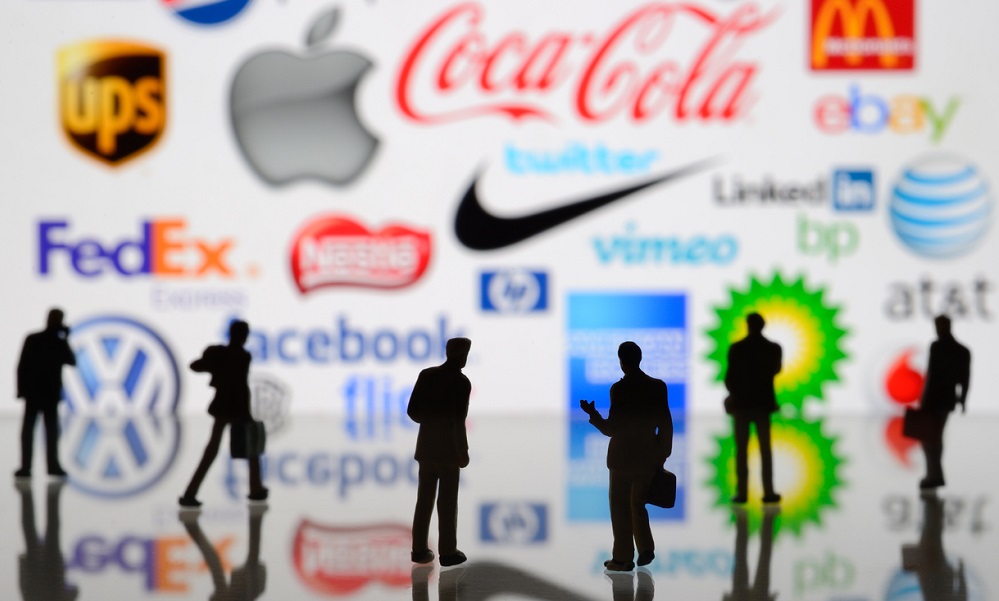Although the use of a third party’s trademarks for advertising purposes involves certain risks, legislation allows it provided that it is in the context of fair play and bearing in mind certain limitations for which it is always advisable to obtain sound legal advice.
An ad for a sports car: at the top the phrase “Congratulations to Audi for winning South African Car of the Year 2006” and at the bottom “From the Winner of World Car of the Year 2006”. The reply was not long in coming: a new similar ad appeared shortly afterwards showing another make of sports car with the message “Congratulations to BMW for Winning World Car of the Year 2006”, and ending with “From the Winner of Six Consecutive Le Mans 24 Hour Races 2000-2006”.
These types of advertising campaigns in which reference is made directly or indirectly to competitors’ products and trademarks are quite common in countries such as the US, which actively encourages comparative advertising on the understanding that it can benefit consumers, provided that the products the ads refer to are clearly identified, and the information subject to comparison is truthful and nondeceptive (Federal Trade Commission Commercial Practice, Rule 16 CFR §14.15 n 1). In addition, thanks to a relaxed or more flexible interpretation of these requirements by the Courts, archrivals such as Coca-Cola and Pepsi, McDonald’s and Burger King, or Apple and Samsung, have made the US public used to ad wars which in our country would take many people aback.
Comparative advertising is undoubtedly very effective at convincing consumers and also encourages competition and for this reason tends to receive the approval of the EU lawmakers. However, complying with the principles of Directive 2006/114/EC of the European Parliament and of the Council of 12 December 2006, concerning misleading and comparative advertising, is no an easy task. Let’s see why.
It is allowed in Spain the use of third parties’ trademarks to promote own products and services?
The first question we need to ask is whether the reproduction of a third party’s distinctive sign in advertising constitutes an infringement of the competitor’s trademark rights. Article 34 of Spanish Trademarks Law 17/2001, of December 7, 2001 (Trademarks Law) allows the owner of a registered trademark to prohibit its use by third parties. However, the legislator is of the opinion that this exclusive right, far from being absolute, should cease in the case of certain use that is considered fair (indeed, article 37 of the Trademarks Law contains express limitations on ius prohibendi – the most characteristic expression of industrial property rights).
Hence, is a limitation on trademark rights, since it is considered fair use, (i) the use of a sign where it is not used as a trademark or where such use is the only way of providing necessary information – for example, to indicate that a replacement part is compatible with certain manufacturers –, (ii) where there is no likelihood of confusion or association among consumers and (iii) where the use of the trademark does not alter nor undermine the distinctive functions of the trademark.
It is therefore useful to analyze in further detail the concept of “fair use” or “fair practices”, by looking at the regulation that governs competition, namely Spanish Unfair Competition Law 3/1991, of January 10, 1991 (Unfair Competition Law) and article 10 in particular, since it regulates the conditions under which an explicit or implicit reference to a competitor in advertising might be considered fair:
- The goods or services compared must have the same purpose or satisfy the same needs. Indeed, the essential premise of comparative advertising is that the goods or services compared must be equivalent and clearly identified in the ad. Generic statements such as “competitors’ products” or the comparison of products in different categories are not permitted. To give an example, the Court of Justice of the European Union (CJEU) held in its judgment of February 8, 2017 (case C‑562/15), that an advertising which compares the prices of products sold in shops having different sizes or formats is unfair, unless consumers are clearly informed of this fact in the advertisement itself.
- The comparison must be carried out objectively between one or more of the essential, pertinent, verifiable and representative characteristics of the goods or services, which may include the price. The second requirement is that the results of the comparison must follow demonstrable criteria that can be assessed following objective criteria. Therefore, indicating that a product is “better” than another in the abstract is not permitted, since this is a value judgment. The comparison must necessarily refer to objective characteristics such as durability or resistance. In addition, the results of such comparison must be based on real and verifiable data.In this regard, the decision of November 28, 2019 by Panel Seven of Autocontrol’s Advertising Jury (an independent extrajudicial body responsible for resolving disputes and complaints in advertising in Spain), considered to be unlawful an ad for the drink Pepsi MAX under the title a “taste challenge”, because although it used objective data on consumer preferences, the information referred to a characteristic that cannot be objectively verified – the taste -.
- Goods or services may not be presented as imitations or replicas of others to which a protected trademark or trade name is applied. This prohibition seeks to protect the trademark owner by preventing parasitic use of the third party’s trademark. For example this prohibition has been used in support to perfume brands in order to avoid the proliferation of businesses that are based on the imitation of well known perfumes.
- The comparison cannot violate articles 5, 7, 9, 12 and 20 of Unfair Competition Law regarding misleading and disparaging acts and the exploitation of a third party’s reputation. Finally, advertising that engages in any typically unfair acts is also unlawful:
- Regarding misleading acts, a comparison that is likely to cause confusion in a reasonably well informed, observant and circumspect consumer regarding the characteristics of the product, service or offer is unlawful. Examples include the decision by the plenary meeting of Autocontrol’s Advertising Jury, of January 10, 2013 regarding the ad for a tomato sauce which stated that it was made “with the best tomatoes”. The self-regulatory advertising body held that the absence of proof that the tomatoes used in the product advertised were of better quality than those used in competing products was not in line with the criteria of truth and therefore considered that the ad was misleading.In a similar vein, in its decision of November 17, 2017, Panel 28 of the Madrid Provincial Appeal Court, concluded that the expression “Shaves better than Mach 3” constituted unlawful comparative advertising because although products with the same function were being compared, reference was being made to an advantage that could not be measured with respect to their purpose: “When stating in the packaging that the Hydro 3 blades are ultra-glide blades, it would be admissible to specify that they glide more than Mach 3 for example, or that the Hydro 3 gel is smoother than the Mach 3 gel. But the advertisement does not do this and presents, in the abstract, a product which it classifies as better than the other, without referring to a specific measure or advantage”.
As we have been saying, claims based on unverifiable characteristics of products such as taste, quality, smell, attractiveness, etc. should be avoided.
- Regarding misleading acts, a comparison that is likely to cause confusion in a reasonably well informed, observant and circumspect consumer regarding the characteristics of the product, service or offer is unlawful. Examples include the decision by the plenary meeting of Autocontrol’s Advertising Jury, of January 10, 2013 regarding the ad for a tomato sauce which stated that it was made “with the best tomatoes”. The self-regulatory advertising body held that the absence of proof that the tomatoes used in the product advertised were of better quality than those used in competing products was not in line with the criteria of truth and therefore considered that the ad was misleading.In a similar vein, in its decision of November 17, 2017, Panel 28 of the Madrid Provincial Appeal Court, concluded that the expression “Shaves better than Mach 3” constituted unlawful comparative advertising because although products with the same function were being compared, reference was being made to an advantage that could not be measured with respect to their purpose: “When stating in the packaging that the Hydro 3 blades are ultra-glide blades, it would be admissible to specify that they glide more than Mach 3 for example, or that the Hydro 3 gel is smoother than the Mach 3 gel. But the advertisement does not do this and presents, in the abstract, a product which it classifies as better than the other, without referring to a specific measure or advantage”.
- Disparaging statements are those that may damage a competitor’s reputation in the market, unless they are accurate, true and pertinent. For unfair disparagement to exist and not mere discredit, the Spanish Supreme Court demands that certain requirements be met that lead to the public damage of a third party’s reputation, that is, from a “correspondence with the reality of the events to causing a faithful representation of such reality – inaccuracy is irrelevant if it does not mislead the average consumer – and the ability to have an impact on the decisions that are taken in the market, it also being held that they are not pertinent if they are not justified or are disproportionate” as judgment 4484/2011 by the First Chamber of the Supreme Court of June 30, 2011.
- Exploitation of a third party’s reputation are acts that seek to take unfair advantage of a competitor using the third party’s trademark to generate undue association and keep in the slipstream of the reputation acquired by the original brand in the market. This is the case of what is known as “parasitic” advertising, which seeks to “adhere” its products to those of a competitor who enjoys a reputation in order to take advantage of its efforts and investments, in advertising, marketing or R+D. According to case law “in comparative advertising the aim is to distance oneself from the competitor in order to show consumers the superiority of the offer. Parasitic advertising seeks to place the own product or offer on an equal footing with the third party’s offer” (judgment by the Madrid Provincial Appel Court, of October 14, 2005 , Prozac case).
In short, although this type of advertising is not without risks, the reply to the question in the title of this post is most definitely positive: provided that advertisers abide by the rules of fair play and have sound legal advice, comparative advertising is not only lawful but may also prove beneficial to society, since it helps to highlight objectively the advantages of the different products that are compared and thus stimulates competition among companies to the benefit of consumers (C‑112/99 “Toshiba Europe”, C‑356/04 “Lidl Belgium” and C‑562/15 “Carrefour Hypermarchés SAS”).
Intellectual Property Department






